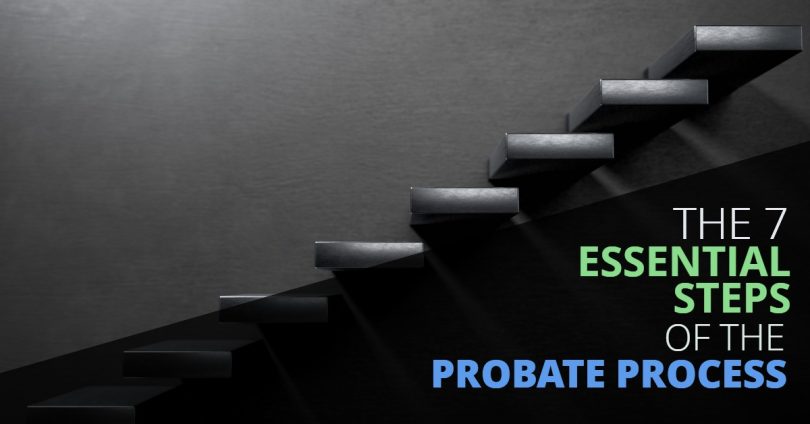When someone dies, the money and property which makes up their estate will be distributed to their heirs. Usually, for those assets to be properly distributed, the estate must go through the probate process. This involves several steps, including proving the existence of a valid Will (if applicable), identifying and inventorying the property, appraising the property, paying debts and taxes, and then distributing the remaining property.
California Probate
Before the proceedings can get underway, the court needs to appoint someone to oversee the process. If there is a Will, it typically designates a personal representative to take on this duty. If not, the court will appoint someone to serve in that role. The personal representative must be impartial in his or her representation of all parties who have an interest in the estate. This person will take possession of the estate property and distribute that property accordingly.
How Does Probate Work in California?
Here are the 7 basic steps required in the California probate process.
Step 1: Filing the Petition
The first step in initiating probate proceedings is filing a petition with the California Superior Court in the county where the deceased resided at the time of her death. This petition will trigger the court to schedule a hearing in approximately thirty (30) days.
Step 2: Handling of Notices
After the petition is filed with the court, the notice of hearing will be published a minimum of three times in the local newspaper. It is also necessary to mail the notice to everyone named in the will (if there was one), along with all legal heirs of the deceased. Notice must also be provided to potential creditors.
Step 3: Proving the Will
If there is a Will, it is necessary to “prove” the Will unless it qualifies as a “self-proving” Will. In some cases, the will contains specific language and/or an affidavit from everyone signing the Will, which makes it unnecessary to prove the validity of the Will. Each state has its own rules regarding whether or not self-proving Wills are valid and, if so, how they must be created.
Step 4: Asset Collection
One of the primary duties of the personal representative is to take possession of all of the deceased’s assets, but only those that are subject to probate. There are some types of estate planning instruments that are not required to go through probate. If the title of an asset needs to be transferred into someone else’s name, the personal representative must take care of that. Some types of assets that may require a title change include:
- Stocks and Bonds
- Mutual Funds
- Brokerage Accounts
- Bank and Credit Union Accounts
- Physical assets such as real property, motor vehicles, boats, and planes
The court usually requires an inventory of the estate property. Sometimes an appraisal of certain property may be required.
Step 5: Payments to Creditors
Once the personal representative has provided notice of the death to creditors, those with debts payable by the estate must submit a claim. If those claims are determined to be valid, they will be paid from the estate. All valid debts must be paid before other distributions can be made. This includes all bills, as well as funeral expenses. California requires creditors to submit their claims within four months of the appointment of the personal representative.
Step 6: Estate Tax Payments
The personal representative is also responsible for making sure all estate taxes are paid, that includes federal estate taxes and state taxes, which the state of California imposes. In most cases, a personal representative would not be held personally liable for estate taxes, but if the estate has been distributed before the taxes are paid and there isn’t sufficient property left to pay those taxes, personal liability may be imposed.
Step 7: Conclusion of the Estate
The final step is closing the estate. This final step involves providing an accounting of all actions taken by the personal representative with regard to the estate. A petition, which summarizes the estate and reports all actions taken on behalf of the state, will be filed with the court. The petition also includes the fees to be paid to the personal representative and the estate attorney, if applicable. If there are no objections and the court approves the accounting, then an order will be entered by the court concluding the estate. Once this happens, the personal representative can then distribute the remaining assets to heirs and pay any necessary fees.
Article reference:
https://www.schomerlawgroup.com/







